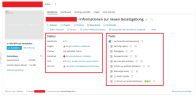-
We value your experience with Plesk during 2025
Plesk strives to perform even better in 2026. To help us improve further, please answer a few questions about your experience with Plesk Obsidian 2025.
Please take this short survey:
https://survey.webpros.com/
Question Why Plesk controls my self-installed (FTP upload) Wordpress installation since last update
- Thread starter jmar83
- Start date



